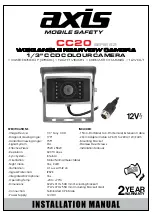
20
b) Microscope
• Do not examine objects with temperatures outside the given operating temperature range of the product.
• Sudden temperature change may form dew inside the Microscope like entering a warm room in cold
winter. Put it inside a handbag or plastic bag to slow down temperature changes.
• Do not point Microscope lens to the sun or strong light for a long time. Powerful light may damage the
light-sensitive electronics.
• Do not force the card into the slot as this may damage the microscope and the MicroSD memory card.
• The base of the microscope may leave marks on sensitive surfaces.
c) Cable
• When setting up the product, make sure that the cable is not pinched, kinked or damaged by sharp
edges.
• Always lay the cables so that nobody can trip over or become entangled in them. This poses a risk of
injury.
d) Protection Against Dust
• Dust and debris from the air can lead to deterioration of image quality. Keep the Microscope away from
dusty environments.
• The opening of the camera lens should always be protected either with dust covers such. Suitable
options include aluminium foil or plastic bags.
• If dark specks or similar in-focus artifacts are observed in digital images, and they are not in the specimen
plane, their most likely cause is particulate contamination on the image sensor or an associated filter
surface. The cameras always need to be handled with the utmost care and protected from dirt according
to the manufacturer‘s recommendations.
• Before every critical use, check the front lens of the objective for dirt.










































